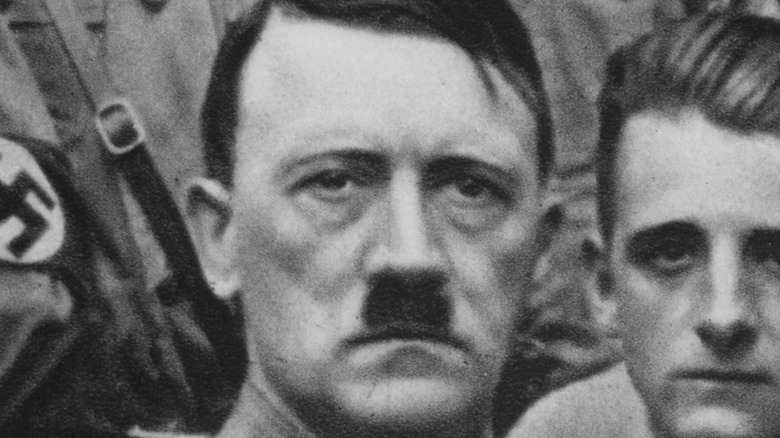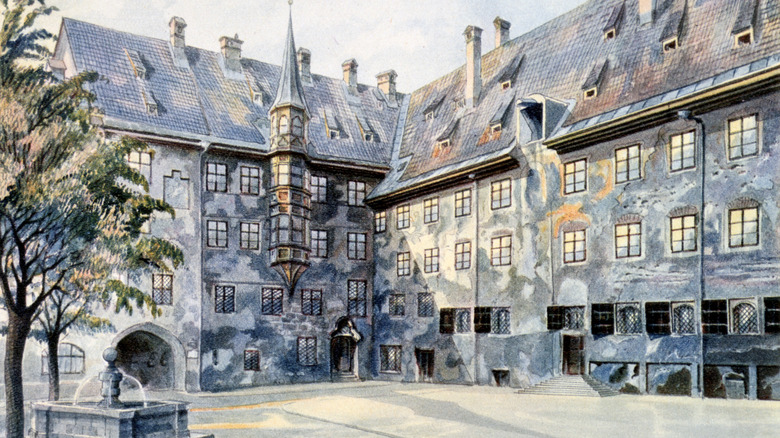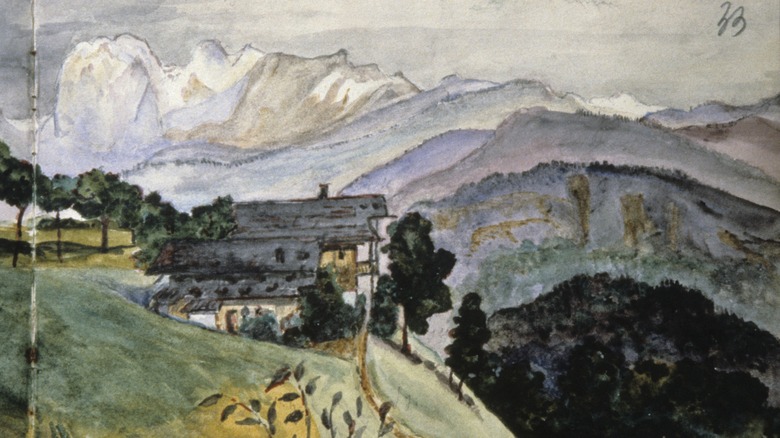Here's Why Hitler Was Rejected From Art School
It's one of those timeless thought experiments of history: If you could go back in time and kill baby Hitler, would you? Maybe it would prevent future suffering but it's impossible to say for sure. There's a slightly less morally ambiguous — and slightly less famous — version of the question, though, and it'll probably make you scratch your head at least as much: If you could go back in time and make sure Hitler got into art school, would you?
You read that right: While Hitler is probably best known as a murderous dictator, he was also something of an aspiring artist as well, and in his teen years applied to the Vienna Academy of Fine Arts not once, but twice. In 1907, the school accepted 75% of its applicants, so you had to be pretty bad not to get in; Hitler was one of the 28 who got shut out (via Sartle). If only they'd had a 76% acceptance rate, the world might have been spared a lot of suffering. Let's take a look at Hitler's attempts to be an artist, and how his failure helped ensure that no one other than Michael Jordan would ever try to rock a Charlie Chaplin mustache ever again.
Hitler tries to be an artist
Hitler had failed out of high school; still, convinced he was talented, he thought he could make it in the art academy, and actually moved all the way from his hometown of Linz to Vienna on the expectation that he would make the cut. Unfortunately, he was rejected twice, and eventually ended up living on the streets of Vienna (via History).
While we have no record of the exact reason Hitler was rejected from art school, the faculty there found his drawing "unsatisfactory." Part of the reason for that may have been that the drawing tests for entrance consisted mainly of religious scenes, and Hitler was seemingly uninterested in the human form — one reviewer described his work as having "too few heads" (via News 18), which is a strange-but-not-inaccurate way of describing it. American journalist John Gunther, describing Hitler's attempts at art in 1938, wrote, "They are prosaic, utterly devoid of rhythm, color, fading, or spiritual imagination. They are architect's sketches: painful and precise draftsmanship; nothing more."
In fact, while Hitler had little to no concern for his human subjects, his paintings and sketches of buildings are exacting in their geometric precision, to the extent that at least one of the instructors at the art academy encouraged him to give up painting and become an architect instead; unfortunately, this would have required Hitler to return to high school and pass some of the math classes he had previously failed, which he had no interest in doing (via All That's Interesting).
The aftermath of Hitler's failed artistic ambitions
Rejected from school and unable to pay rent, Hitler landed in a homeless shelter and was eventually reduced to doing what all failed artists do: making kitsch. He painted scenes from Vienna — most of which he copied from postcards — and sold the paintings to tourists and frame-makers.
As far as historians can tell, it was on the streets of Vienna that he first encountered the rabid antisemitism that would fuel his rise to power years later, in the form of the rhetoric of Franz Josef I, who blamed Austria's financial woes on Jews hoarding the country's wealth (via The New Yorker). Eventually, Hitler enlisted in the German military, which led him to a career in politics, and — well, you know how the rest of the story goes.
Even as Führer, though, Hitler never let go of his old artistic resentments, and led a public campaign against modern art, calling it the "degenerate" work of Jews and Bolsheviks. He was so upset by it that, in 1937, he arranged a touring display of hundreds of works of modern art, just so everyone could see how bad it was; according to CBS News, it was one of the best-attended art exhibitions in Germany history, so, success, we guess?
Hitler created something in the neighborhood of 2,000 paintings in his lifetime, hundreds of which still survive and have been sold for millions of dollars. Hitler, of course, never saw a penny of it.


